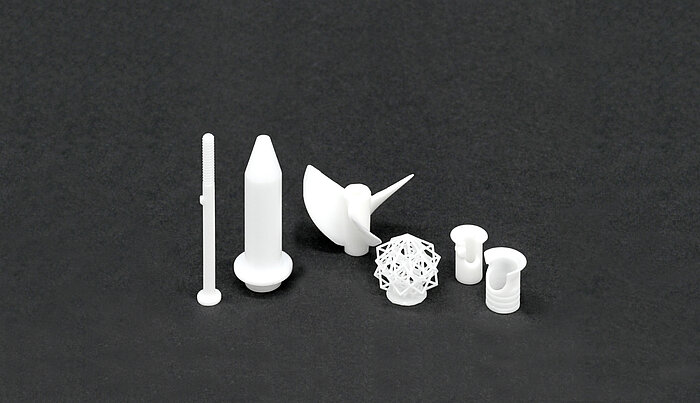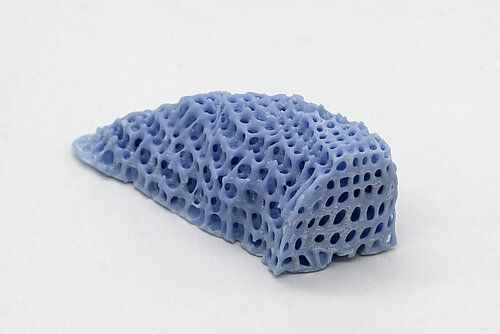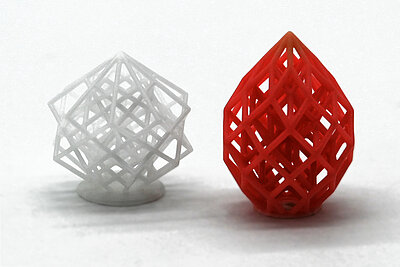3D printing of ceramics: alumina vs. zirconia
More than a year ago, we took another step with the innovation of ceramic 3D printing at CADdent, in order to continue to impress with know-how and experience in the latest technologies and materials.
Zirconium dioxide in dental technology
In the dental world, zirconium dioxide, also known colloquially as "zirconia", is a highly valued ceramic material. This convinces above all with the combination of very good biocompatibility and excellent aesthetics. Zirconia can also be milled easily and very reliably from a blank, which means that dentures can be manufactured reproducibly and economically.
Advantages of additive manufacturing of ceramics
However, due to the process, subtractive manufacturing entails limitations in geometric freedom. As you already know from metal processing using the LaserMelting, extremely complex and significantly more delicate geometries could also be realized with the additive manufacturing of ceramics than with the subtractive milling process. This expands the range of applications of ceramic materials exorbitantly, also outside the world of dental technology.
3D printed zirconia in dental technology
From a chemical point of view, the zirconia used in ceramic 3D printing is almost identical to the milling material FAB Zirconia OP (formerly CADtools Opaque) known in dental technology. However, the use of printable zirconia in dental technology is prevented by regulations because this material is not approved for the dental sector.
3D printing with ceramics: versatile ceramic materials
In addition to zirconia, which is well-known in dental technology, CADdent components can also be made from a number of other ceramic materials. The most commonly used ceramic in the rapid prototyping market is aluminum oxide. We also process the combinations of the two aforementioned materials "ZTA" (zirconia toughened alumina) and "ATZ" (alumina toughened zirconia). These so-called mixed oxide ceramics offer the advantage that the material component added in each case partially compensates for the disadvantages of the main component. The advantages of the respective main material are largely retained.
What is the difference between alumina and zirconia?
Basically, both ceramics have a very high strength and a very good resistance to chemicals, corrosion and temperature. They are also electrically insulating and biocompatible, which means that both materials work equally well in many areas of application. Both materials are also visually indistinguishable due to the color and very good surface quality. Zirconia is only a tiny bit whiter than aluminum oxide, which tends to have a very slight yellow tinge. Otherwise, zirconia has higher fracture toughness and is less thermally conductive than alumina. Aluminum oxide, on the other hand, is harder and, due to its lower density, weighs significantly less than zirconium. In general, it is also true that aluminum oxide can be processed better in the ceramic 3D printing process and therefore extremely thin wall thicknesses of 0.15 mm or through-holes with a diameter of 0.15 mm can be realized. Furthermore, aluminum oxide is also cheaper to purchase and therefore also in terms of the final price than zirconia.
3D printing with ceramics to produce bone substitutes
Again and again we test ceramic materials which have only just entered the 3D printing market or are even still under development. These include, for example, lithium disilicate, which is also known in dentistry, or the bone replacement material hydroxyapatite, which as a naturally occurring mineral forms the main component of bones. Due to its excellent biocompatibility and osteoconductivity, hydroxyapatite is ideally suited for the manufacture of a patient-specific bioresorbable implant. Due to the usually porous structure, regenerating bone cells can reproduce piece by piece and gradually resorb the introduced material. This means that no removal of the implant is necessary.
3D printing with ceramics in research and development
In addition to new materials, we at CADdent are also experimenting with coloring 3D-printed components by infiltrating them with special additives. For example, printed aluminum oxide components could be colored in various designs. Furthermore, 3D printing with ceramics is part of a larger research project, from which we can present the first results in a timely manner.
In doing so, we are not only expanding our competencies, but are also developing into real pioneers in the field of ceramic 3D printing. This enables us to offer our customers the best possible quality and service. Do you already have a specific idea in mind or are you generally interested in 3D printing with ceramics? Then feel free to contact us at any time.


